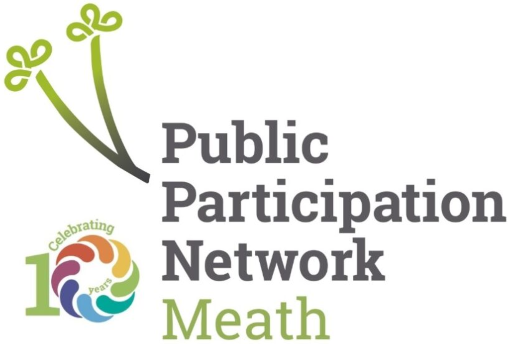All-Ireland Pollinator Plan – July 2024 newsletter
Comments : 0
 Newsletter: July 2024 The All-Ireland Pollinator Plan is a framework bringing together different sectors across the island of Ireland to create a landscape where pollinators can survive and thrive. Its implementation is coordinated by the National Biodiversity Data Centre. |
To spot this month: keep an eye out for the Wool Carder Bee This large solitary bee (Anthidium manicatum) is very distinctive and can be spotted in gardens, especially in the South-East. It was first recorded in Ireland in 2015. Both males and females have a pattern of yellow markings down the sides of the abdomen, head and legs. Photograph: Liam Lysaght.  Submit your solitary bee sightings To do this month: Make sure any annual bedding includes some pollinator-friendly options At this time of year, the shops are full of traditional annual bedding (Begonia, Petunia, Geranium). Just bear in mind, that while these plants are very colourful, they are not good sources of pollen and nectar for bees and other insects. The good news is that there are a few options that you can mix in that are much better sources of food for pollinators (below).  2024 Knowledge Exchange Event for Councils As of March last year, all 42 local authorities across the island of Ireland are signed up as Council Partners to the All-Ireland Pollinator Plan. This means that every council has voluntarily agreed to consider the recommendations of the Pollinator Plan when developing their policies, plans, and management decisions. To support the Council Partners in their work for pollinators, the All-Ireland Pollinator Plan held a Council Conference on the 13th June in Tallaght in collaboration with South Dublin County Council. In response to common work strands and challenges faced by local authorities, the focus of the conference was on meadow management and pesticide alternatives. Over 100 council staff attended from different local authority departments, including Biodiversity Officers, groundskeepers, parks staff, gardeners and engineers. A huge thank you to South Dublin County Council, all the speakers and everyone who attended the 2024 conference.  Read more and find the presentations here Upcoming Wild Bee Festivals The Wild Bee Festival is an annual event coordinated by the National Biodiversity Data Centre aiming to raise awareness of Ireland’s pollinators and how to help them in local communities. The 2024 Wild Bee Festival will take place in Galway City on the 17th and 18th August in collaboration with Galway City Council. The programme and booking details will be announced soon. If you can’t wait until then, why not attend a wild bee festival in Kerry or Skerries? Following the success of the 2022 Wild Bee Festival in Skerries, and the 2023 Festival in Tralee, both have continued to run an annual festival and keep the buzz going. The Kerry festival will take place on Saturday the 6th and Sunday 7th of July, and the Skerries festival on the 20th and 21st of July. Both festivals have a fantastic range of talks, walks, and workshops for pollinator enthusiasts of all ages and all levels of expertise. Hopefully we’ll see many more wild bee festivals popping up around the country in years to come!  Find out more about the 2024 wild bee festivals here Updated Bumblebee Identification Resource This document is used when delivering Bumblebee Identification Workshops. It takes you through how to identify the different bumblebee species in Ireland.  Download the pdf course Pollinator, native plant, and action of the week This month, we’re asking you to take part in Help Them Fly July and keep the food supply going for pollinators over the summer months. Find out about endangered pollinators like the Northern Colletes and Great Yellow Bumblebee, and how you can help pollinators in your sports club. Every month, we’re sharing ideas on how you can support pollinators with evidence-based actions. We’ll also be celebrating the connection between native plants and pollinators by shining a spotlight on different species. Each week on social media we will release a pollinator of the week, a native plant of the week, and an action of the week. You can also get the monthly summary on our website.  July: pollinator, native plant and action of the week Help us track expansion of the Tree Bumblebee The Tree Bumblebee (Bombus hypnorum) arrived in Ireland in 2017 when it was first spotted in Dublin City. Soon after, it was also spotted in Belfast. You can see the current distribution below (based on records submitted until 31st March 2024). It is a very distinctive bumblebee with an all-ginger thorax and a white tail. If you see it, please take a photo, and submit the record to us so that we can track its movement across the island. Photo: Maja Ilic.  Submit your bumblebee sightings Alternatives to herbicides We want to better share knowledge on the use of herbicide alternatives. If you’ve tried to move away from the use of Glyphosate or other herbicides, we’d be very grateful if you could share your experiences of alternatives using this Survey Monkey form.  Link to Survey Monkey form Submit your records of Bee Orchids As a result of No Mow May & Let it Bloom June, we’ve had many emails from people who have spotted Bee Orchids in their gardens or local communities for the first time. If you’re aware of Bee Orchids in 2024, please submit the record to the National Biodiversity Data Centre. The return of this beautiful native Orchid is symbolic of how easy it can be to help biodiversity by choosing the right actions. Photo: John Fogarty  Submit your sightings Can you help by carrying out a FIT Count Flower-Insect Timed Counts (FIT Counts) are an important way that you can help us monitor pollinators. Download the free FIT Count App, watch a 50x50cm patch of flowers for 10 minutes and count how many insects visit. You can carry out a FIT Count anywhere, and on any flower, but where you can, please use one of our 15 target flowers. In July, its especially useful to carry out FIT Counts on Bramble, Hogweed or Ragwort. In 2023, 673 validated FIT Counts were submitted by 126 different volunteers. The average number of insects per FIT Count was 9. Why not try one where you are to see how your site compares. For those interested, the National Biodiversity Data Centre also runs a Garden Butterfly Monitoring Scheme, where you can count the number of butterflies visiting your garden.  FIT Count website Garden Butterfly Monitoring Scheme The National Biodiversity Data Centre is a Company Limited by Guarantee. Register Number: 730718. National Biodiversity Data Centre, SETU West Campus, Carriganore, Waterford, Ireland, X91PE03 |

